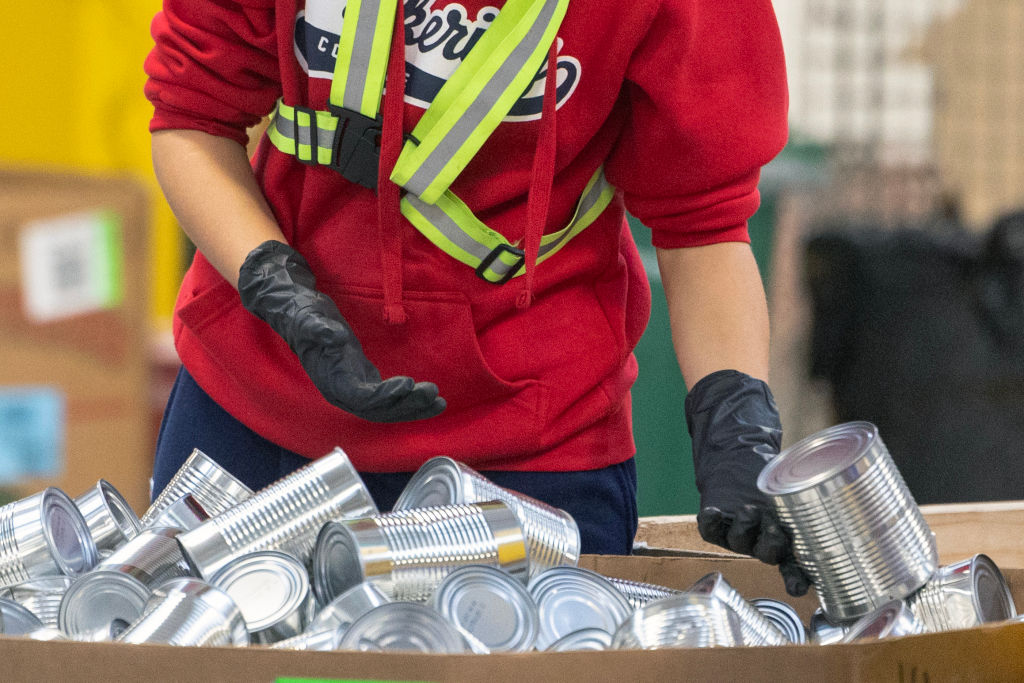
In a nation as affluent as the United States, it's a harsh reality that more than 44 million people, including vulnerable children and seniors, grapple daily with food insecurity. Yet, this problem is not confined within any single nation's borders. Globally, conflicts, climate changes, and a worldwide pandemic have escalated the number of those in dire need of access to food from 80 million to an astonishing 350 million in the past seven years.
If the chronically hungry formed their own nation today, it would be the third-largest in the world. This isn't just a metaphor; it’s a stark representation of the vastness of this crisis.
The glaring irony is that globally, we produce sufficient food, yet fail in equitable distribution. This massive global misalignment threatens more than just the immediate need for food around the world. It underlies geopolitical instability, exacerbates shortages, and triggers mass migrations.
We cannot achieve world peace and progress on a planet half fed and half hungry.
The tools and solutions we require to combat the challenge are available, including more sustainable, efficient ways to provide short-term hunger relief, and new production systems and delivery methods to provide nutritious food and clean water. Piecemeal action is already happening, but we can collectively do much better. We must do better.
My own personal encounter with hunger began in childhood, in a home where meals weren't always certain. A turning point came with an act of kindness — a stranger delivering a Thanksgiving meal. This gesture filled more than a physical void; it instilled a lifelong resolve to combat hunger.
My multi-decade journey combating hunger and its underlying contributors has been both eye-opening and disheartening. The generosity of everyday human beings is such a powerful force for good if directed. At the same time, during the past decade I have witnessed on multiple occasions cuts being made to essential hunger relief programs like the U.S. Supplemental Nutrition Assistance Program (SNAP), both before and after the pandemic. Both drive me to greater action and my search for the answer to the critical question: Why, in a world capable of producing ample food, are so many still battling hunger?
What I have concluded is that the solution lies beyond mere food provision; it's about transforming our global perspective and methods for sustainable nourishment. It involves rethinking strategies to supply food without burdening impoverished populations and our planet.
As John F. Kennedy once said, “The war against hunger is truly mankind's war of liberation.”
The financial aspect, though daunting, is manageable. Annually, $265 billion is required for sustainable hunger eradication, according to the Food and Agriculture Organization , a small fraction of the global GDP. It's a feasible investment for the welfare of millions and the stability of our global community.
More From TIME
This battle against hunger demands a unified front, combining the efforts of NGOs, governments, and conscientious citizens. It's about harnessing our resources, innovations, and collective will to bridge the gap between surplus and need.
As we strategize and form alliances, the power of individual action remains crucial. One person's efforts can significantly impact this seemingly insurmountable issue, as history has repeatedly shown. Personally, I would have not even considered 40 years ago when I started giving food to just two families that I would now be able to successfully deliver 1 billion meals to families in the U.S.
Big-minded, innovative approaches are needed to tackle the diverse challenges of global hunger. This includes investing in agricultural technology to improve crop yields in underdeveloped regions, creating better food storage and transportation methods to reduce waste, and implementing policies that ensure fair distribution of resources needed to sustainably feed the world.
Furthermore, it's essential to address the root causes of hunger, which often lie in political instability, economic disparity, and social injustice. Solutions must be holistic, addressing these underlying issues to create lasting change.
Moreover, the impact of hunger extends beyond the immediate lack of food. It affects children’s ability to learn, workers’ productivity, and the overall health of communities. Addressing hunger is not just about providing meals; it's about laying the foundation for a healthier, more productive society. Making the investment now will more than pay for itself long-term.
As we stand at this crossroads, the challenge is not only to feed the hungry but to do so in a way that respects our planet and its resources. Sustainable practices in agriculture and food distribution are vital for the well-being of future generations.
I believe in our collective ability to address and eventually solve this crisis. This conviction stems from personal experiences and the numerous stories of resilience and generosity I've encountered. It's a testament to the power of human compassion and ingenuity.
Together, we can change the course of global hunger and ensure that no individual, regardless of their location, faces the uncertainty of their next nutritious meal.
More Must-Reads from TIME
- Donald Trump Is TIME's 2024 Person of the Year
- Why We Chose Trump as Person of the Year
- Is Intermittent Fasting Good or Bad for You?
- The 100 Must-Read Books of 2024
- The 20 Best Christmas TV Episodes
- Column: If Optimism Feels Ridiculous Now, Try Hope
- The Future of Climate Action Is Trade Policy
- Merle Bombardieri Is Helping People Make the Baby Decision
Contact us at letters@time.com